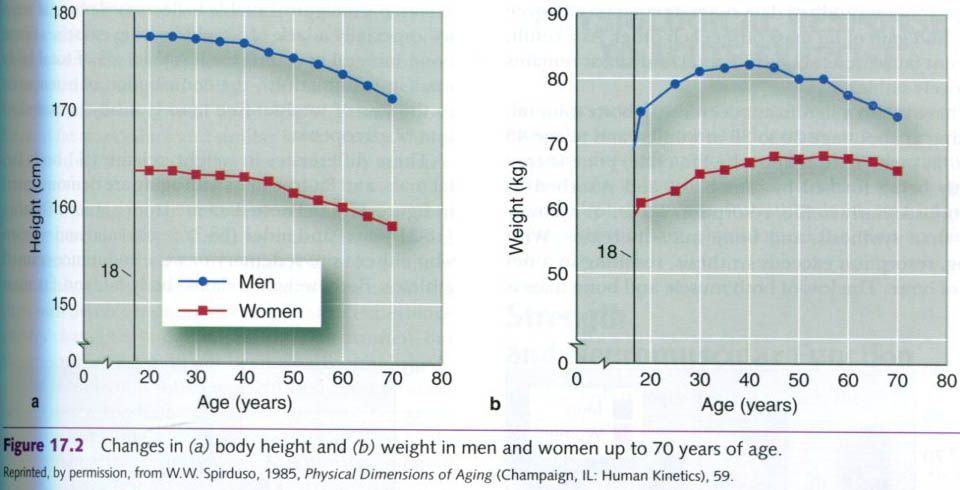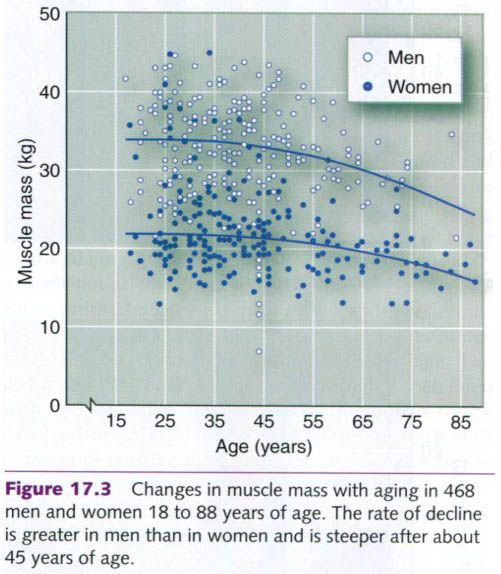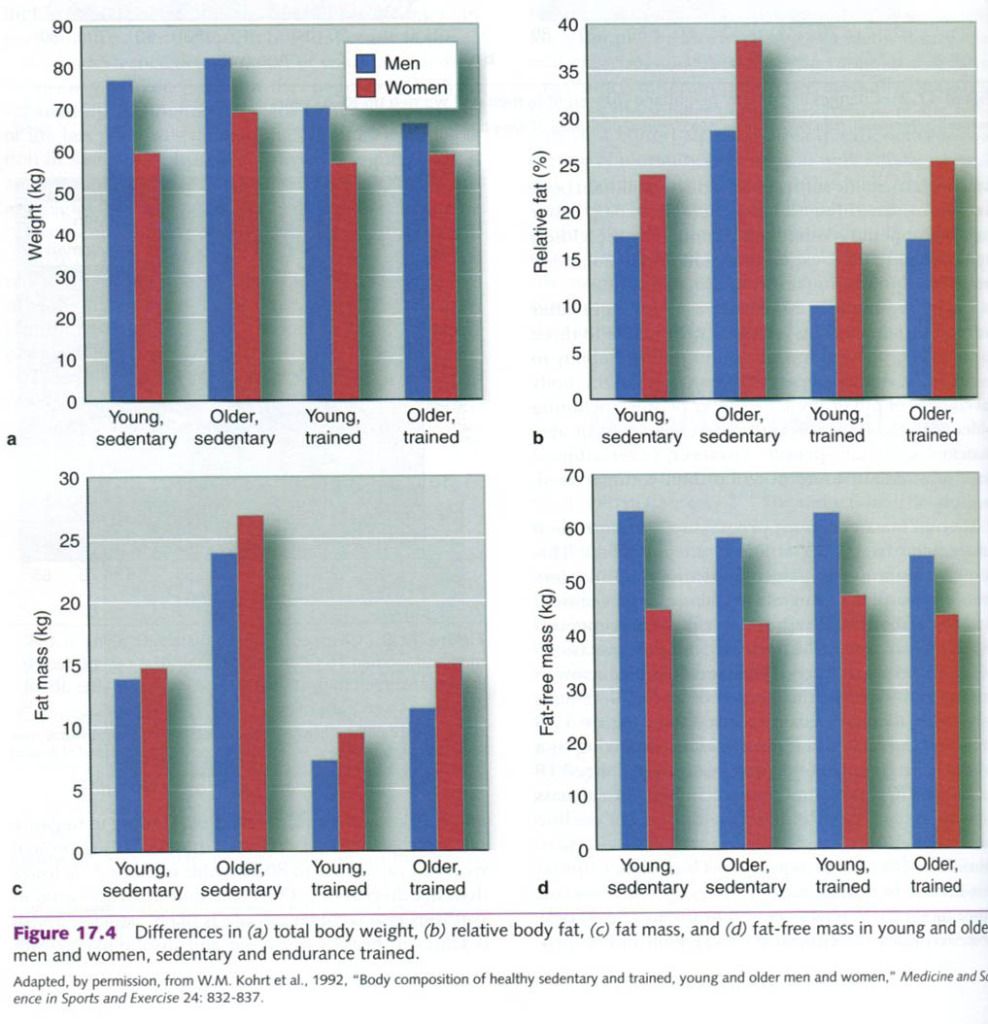Beginning at about 20 years of age, as we get
older we tend to gain fat. This is
largely attributable to three factors: diet, physical inactivity, and reduced
ability to mobilize fat stores. As
one might anticipate, the body fat content of physically active older people,
including older athletes, is significantly lower than that of age-matched
sedentary people. However, older athletes have substantially more body fat than
younger competitors.
Fat-free mass decreases progressively in both
men and women beginning at about the age of 40. This results primarily from
decreased muscle and bone mass, with muscle having the greatest effect because
it constitutes about 50% of the fat-free mass. Sarcopenia is the term used to
describe the loss of muscle mass associated with the aging process. Osteopenia
is a companion term used to describe the less severe loss in bone mass with
aging than is seen in osteoporosis. Figure below illustrates the changes in
muscle mass with aging in a cross-sectional study of 468 men and women, aged 18
to 88 years. There is almost no decline in muscle mass until about age 40, at
which time the rate of decline increases, with a greater decline in men than
women. Obviously, a decline in activity level is a major cause of this decline
in muscle mass with aging, but there are other factors. It is now known that
the rate of muscle protein synthesis is
reduced as we age while muscle protein breakdown rate is unchanged, leading to
negative nitrogen balance and net loss of muscle. Muscle protein synthesis rate
in 60-to 80-year-olds is about 30% lower than in a 20-year-old. This reduction
in muscle protein synthesis rate in older people is likely associated with
declines in growth hormone and insulin-like growth factor-1. Longitudinal
data suggest that loss of fat-free mass and gain of fat mass offset each other. As a result, percent fat is increasing while total body mass
remains relatively stable.
There is also a significant decrease in bone
mineral, starting at about age 30 to 35 in women and at age 45 to 50 in men. Throughout
the life cycle, bone in constantly being formed by osteoblasts and resorbed by
osteoclasts. Early in life, resorption occurs at a slower rate than synthesis,
and bone mass increases. With aging, resorption exceeds synthesis, resulting in
a net loss of bone. The loss of both muscle and bone mass is at least partially
attributable to decreased physical activity, especially a lack of
weight-bearing exercise. Since bone mineral accounts for less than 4% of total
body mass in young adults, the contribution of osteopenia to the loss of total
fat-free mass is small compared to that of sarcopenia.
These differences in weight, relative(%) body
fat, fat mass, and fat-free mass with
aging are demonstrated in figure below. These data are from a study of
young(18-31 years) and older(58-72 years) men and women who either were
sedentary or were endurance-trained athletes. Body weight, relative body fat,
and fat mass were higher in older sedentary groups, whereas fat-free mass was
lower. Similar trends, except for body weight, were noted for the
endurance-trained athletes. However, the young and older endurance-trained
athletes had much lower total body weight, relative body fat, and fat mass
values and similar fat-free mass values compared to their sedentary age-matched
counter-parts.
With training, older men and women can reduce
weight, percent body fat, and fat-free mass; but as in younger individuals,
this is more likely with resistance training than with aerobic training. Men
appear to experience greater changes in body composition than women, but the
reasons for this have not been clearly established.
The most significant changes in body
composition result from a combination of diet and exercise, with a modest
reduction in caloric intake(500-1000 kcal/day) being the preffered approach. A
more substantial reduction in caloric intake(>1000 kcal/day) is likely to
result in a loss of fat-free mass as well as fat mass. This is not desirable, as a loss in fat-free mass is
associated with a reduction in resting metabolic rate, thus decreasing the rate
of weight and fat loss. Exercise that increases fat-free mass will likely
increase resting metabolic rate,
which would increase the rate of weight loss. It appears that older adults
experience changes in body composition due to exercise training similar to
those for younger adults.












0 коментара:
Постави коментар